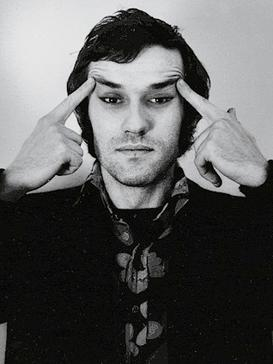
Alighiero Boetti
Alighiero Boetti, a Conceptual artist associated with the Arte Povera movement, is renowned for his embroidered maps series. Boetti transitioned from business school to an artistic career, producing a diverse range of works employing unconventional materials and processes.
Biography of Alighiero Boetti
Born in the industrial city of Turin, Italy, in 1940, Alighiero Boetti rose to prominence as a part of the Arte Povera movement in the late 1960s. The artist displayed an early fascination with the theory of creativity despite lacking formal art training.
Boetti claimed lineage from an 18th-century Dominican monk named Giovanni Battista Boetti, who, according to accounts, converted to Islam during a mission in Mosul and changed his name to Sheikh Mansur. While the precise details of Mansur's life remain subject to speculation, it is undeniable that Boetti declared himself to be following in his ancestor's footsteps.
The artist made regular journeys to Asia in the 1970s, and during a visit to Afghanistan, he encountered the traditional craft of embroidery, a pivotal moment in his artistic journey. He even purchased a hotel in Kabul and employed local Afghan embroiderers to create his "Arazzi," "Mappe," and other tapestry series.
In 1972, Boetti distanced himself from Arte Povera and relocated to Rome, where he became a master of Conceptual art. During this period, the artist adopted the name Alighiero e Boetti ("Alighiero and Boetti") and began signing his work in this manner, suggesting the presence of two artists within one.
After exhibitions in Milan and Turin, Boetti had his first solo show in the United States at the John Weber Gallery in New York in 1973. He continued to exhibit his work in Italy and the United States until his untimely death in 1994.
The artist, in addition to his artistic pursuits, was also a published author. In 1977, he collaborated with his wife, Anne-Marie, to publish "Classifying the Thousand Longest Rivers in the World." This extensive work required seven years to complete and involved the challenging task of sourcing, reconciling, and tabulating a substantial volume of inconsistent data to rank, in a precise order, the 1,000 longest rivers on our planet.
In 2014, Boetti's sculpture "Colonna," created during the height of Arte Povera in 1968, achieved a world-record price for the artist at auction when it sold at Christie's for £2,434,500. At first glance, it may appear to be a marble Classical column, but it's a quintessential Arte Povera piece, consisting of numerous paper doilies layered on an iron rod.
From 1987 until his passing, Boetti devoted himself to creating his most extensive and intricate tapestry, "Tutto," aiming to represent the world's cultural diversity. Though he passed away before its completion, Boetti's work remains a subject of study and discussion, representing a significant paradigm of contemporary artists' international approach.
Alighiero Boetti's Art Style
Boetti's early works, such as "Mazzo di tubi, Collina" – a sculpture composed of stacked metal tubes resembling rolling hills – and "Rotolo di cartone ondulato" from 1966 – a roll of cardboard shaped into a Ziggurat-like tower – evoke a sense of curiosity and playful inventiveness with materials reminiscent of a child's instincts, something Boetti himself recalled making in his youth.
One of his notable works of Conceptual art, "Dossier Postale" (1969-70), exemplified his fascination with improbability and chance. It comprised 26 letters sent to famous recipients at fictional addresses, including Marcel Duchamp, documenting their unpredictable journeys.
His enduring exploration of the interplay between "order" and "disorder" is evident in his grid structures, drawn from "magical squares," future with sayings and aphorisms stemming from various cultural, philosophical, mathematical, and linguistic contexts. Throughout the 1970s and 1980s, Boetti extensively traveled in the Middle East, crafting a body of work rooted in his interest in the textile arts of Afghanistan and Pakistan.
The artist frequently worked in series, and among his most renowned series are the multicolored embroideries known as "Arazzi." These pieces feature mosaic-like grids of individual letters that combine to form words and phrases, which viewers must decipher by reading from top to bottom, left column to right, in an unconventional fashion. The phrases encompass proverbs, poetry, and even, as seen in 1974's "Addizione," the presentation of a mathematical problem.
Boetti's most renowned series is undoubtedly his 'Mappe,' which comprises tapestry maps of the world where each country is represented by the colors of its flag. There are a total of 150 of these "Mappe," varying in size and spanning from 1971 to 1994, the year of the artist's passing. Collectively, they create an ideological portrait of the passage of time and geopolitical transformations while proposing the concept of a united world.
Many of Boetti's creations revolved around poetic and playful themes, drawing from folkloric anecdotes he encountered during his travels. He frequently designed textiles to be embroidered in artisan workshops, resulting in a body of work that transcended national boundaries, celebrating traditional art forms deeply rooted in tradition, collaboration, and the ritualistic meanings of creation.
Years:
Born in 1940
Country:
Italy, Turin
Gallery: